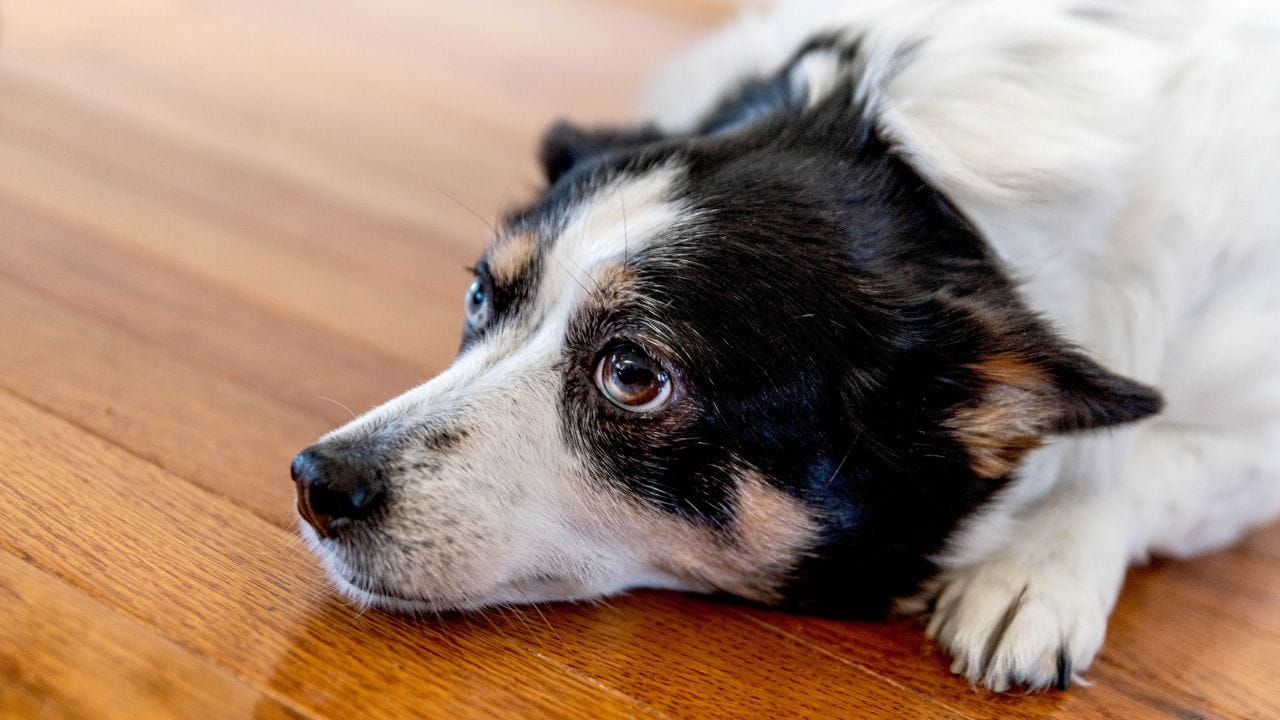Dogs are known for their loyalty and affectionate nature towards their owners. They are often considered as man's best friend. However, just like humans, dogs have their likes and dislikes. As much as they love playing fetch and going for walks, there are certain things that they hate. In this article, we will explore some of the things that dogs hate and how to avoid them.

One of the most common things that dogs hate is being left alone for long periods. Dogs are social animals and thrive on companionship. When they are left alone for extended periods, they can become anxious and stressed, which can lead to destructive behavior. Another thing that dogs hate is loud noises such as thunderstorms or fireworks. These sudden and unexpected sounds can be terrifying for dogs and can cause them to become anxious and agitated.
Another thing that dogs hate is being ignored or mistreated. Dogs are sensitive animals and can pick up on their owner's emotions. If they feel neglected or mistreated, they can become withdrawn and depressed. It is essential to treat dogs with love and respect, just like any other member of the family. By understanding what dogs hate, we can create a comfortable and happy environment for our furry friends.
Understanding Canine Dislikes
Dogs have their own preferences and dislikes, just like humans. Understanding what dogs hate can help you create a comfortable and stress-free environment for your furry friend. Here are a few factors that can contribute to canine dislikes:
Body Language and Stress Signals
Dogs communicate through body language, and it's essential to pay attention to their stress signals. When a dog is uncomfortable or anxious, they may show signs of tension such as a stiff body, dilated pupils, or a tucked tail. Dogs may also pant excessively or lick their lips when they're stressed. It's important to respect a dog's boundaries and give them space when they're showing signs of discomfort.
The Importance of Routine
Dogs thrive on routine and structure. They feel secure when they know what to expect, and sudden changes can cause stress and anxiety. Consistency in feeding, walking, and playtime can help create a sense of predictability for your dog, which can lead to a happier and more relaxed pet.
Sensory Sensitivities
Dogs have a keen sense of smell and can be sensitive to certain scents. Strong perfumes, fragrances, and citrus scents can be overwhelming for dogs and cause discomfort. Similarly, vinegar and other strong odors can be unpleasant for dogs and may cause them to avoid certain areas.
Personal Space and Physical Contact
While some dogs love to be hugged and cuddled, others prefer their personal space. Hugging and touching a dog when they don't want to be can cause stress and discomfort. It's important to let dogs approach you on their terms and respect their boundaries.

By understanding what dogs hate, you can create a comfortable and stress-free environment for your furry friend. Paying attention to their body language, establishing a routine, and respecting their personal space can help ensure a happy and healthy relationship between you and your dog.
Training and Behavior
Positive Reinforcement Techniques
When it comes to training dogs, positive reinforcement is the most effective and humane way to teach them new behaviors. Positive reinforcement involves rewarding a dog for good behavior instead of punishing them for bad behavior. This can be done through treats, toys, or verbal praise. This method helps to build trust and a strong bond between the dog and their owner.
Positive reinforcement also helps to establish clear rules and boundaries for the dog. By rewarding good behavior, the dog learns what is expected of them and what behaviors will earn them praise and rewards. This helps to prevent confusion and frustration on the part of the dog and their owner.
Mixed Signals and Punishment
Mixed signals and punishment can be detrimental to a dog's training and behavior. Dogs thrive on consistency and clear communication, so mixed signals can be confusing and frustrating for them. Punishment, such as yelling or physical discipline, can cause fear and anxiety in dogs, leading to negative behavior and a breakdown in the relationship between the dog and their owner.
Furthermore, punishment does not address the root cause of the behavior problem and can actually make it worse. It is important to identify the underlying cause of the behavior and address it through positive reinforcement techniques and training.
In addition, the concept of dominance in dog training has been debunked by modern research. Dominance-based training methods, such as alpha rolls and physical corrections, can cause fear and aggression in dogs and damage the relationship between the dog and their owner.
Overall, positive reinforcement techniques and clear communication are key to successful dog training and behavior. By establishing clear rules and boundaries and rewarding good behavior, owners can build a strong bond with their furry companions and prevent negative behavior.
Environmental Stressors
Dogs can experience stress from a variety of environmental factors. Some of these stressors include loud noises and being left alone for extended periods of time. Environmental stressors can have a significant impact on a dog's overall well-being and can lead to behavioral issues if not addressed.
Noise Sensitivity
Many dogs are sensitive to loud noises such as fireworks, thunderstorms, and even vacuum cleaners. This sensitivity can cause them to become anxious and stressed, leading to destructive behavior or even aggression. It is important for dog owners to recognize these triggers and take steps to minimize their impact.
One way to help dogs cope with noise sensitivity is to provide a safe and comfortable space for them to retreat to during loud events. This can be a crate or a quiet room with familiar toys and bedding. Additionally, there are products such as noise-cancelling headphones and calming supplements that can help reduce a dog's anxiety during noisy events.
Dislike of Being Alone
Dogs are social animals and often crave human companionship. Being left alone for extended periods of time can lead to separation anxiety and destructive behavior. This behavior can include excessive barking, chewing, and digging.
To help alleviate this stress, dog owners can provide their pets with plenty of mental and physical stimulation when they are away. This can include puzzle toys, interactive games, and even dog walkers or pet sitters. Additionally, crate training can help dogs feel more secure when left alone and prevent destructive behavior.
By recognizing and addressing environmental stressors, dog owners can help ensure their pets lead happy and healthy lives.
Daily Activities and Preferences
Dogs are known for their love of walks and exercise, but some dogs may dislike certain aspects of their daily routine. For example, some dogs may not enjoy being on a leash or may become bored with the same walking route every day. It is important to switch up the routine and provide mental stimulation during walks by allowing the dog to sniff and explore their surroundings.

Playtime and Toys
Playtime is an important aspect of a dog's daily routine, but not all dogs enjoy the same types of toys or play. Some dogs may prefer interactive toys that require mental stimulation, while others may prefer simple toys such as a ball or stuffed animal. It is important to provide a variety of toys and observe the dog's preferences to ensure they are engaged and entertained.
Grooming and Bathing Discomfort
While grooming and bathing are necessary for a dog's hygiene, some dogs may become uncomfortable during the process. Dogs may dislike certain grooming tools or become anxious during bath time. It is important to introduce grooming and bathing slowly and positively, using treats and positive reinforcement to create a calm and comfortable environment for the dog.
In summary, dogs have individual preferences and dislikes when it comes to their daily routine. It is important to observe and adjust their routine to ensure they are mentally stimulated and comfortable. By providing a variety of toys, switching up walking routes, and introducing grooming and bathing positively, owners can create a happy and stress-free environment for their furry friend.
Health and Wellness
Regular Veterinary Care
Regular veterinary care is essential for maintaining a dog's health and wellness. Dogs require routine checkups, vaccinations, and preventative care to ensure they remain healthy. Regular visits to the veterinarian can also help detect and treat any health issues before they become more serious.
During a veterinary visit, a veterinarian will perform a physical exam to check for any signs of illness or disease. They will also discuss the dog's diet, exercise routine, and any behavioral concerns with the owner. Additionally, the veterinarian may recommend diagnostic tests, such as blood work or X-rays, to further evaluate the dog's health.
Understanding Dog's Health
It is important for dog owners to understand their dog's health and wellness needs. This includes understanding their nutritional requirements, exercise needs, and common health issues. Proper nutrition is essential for a dog's overall health and can help prevent obesity, which can lead to a variety of health problems.
Exercise is also important for a dog's health and wellbeing. Regular exercise can help prevent obesity, improve cardiovascular health, and reduce stress. Additionally, exercise can help prevent behavioral problems, such as destructive chewing or excessive barking.
Understanding common health issues that affect dogs, such as allergies, dental disease, and arthritis, can help owners identify potential health problems early on. This can lead to earlier treatment and better outcomes for the dog.
Overall, maintaining a dog's health and wellness requires regular veterinary care, proper nutrition, and regular exercise. By understanding their dog's health needs, owners can help ensure their furry friend lives a happy and healthy life.
Interactions with Humans
Dogs are social animals that crave attention and affection from their owners. However, there are certain interactions with humans that they may not enjoy as much. In this section, we will explore some of the interactions that dogs may dislike.
Discomfort with Eye Contact
Dogs communicate through body language, and eye contact is an important part of this. While some dogs may enjoy making eye contact with their owners, others may find it uncomfortable or threatening. This is especially true if the dog is feeling anxious or stressed. Owners should be mindful of their dog's body language and avoid prolonged eye contact if their dog seems uncomfortable.

Responses to Affectionate Gestures
While many dogs enjoy being hugged and kissed by their owners, others may find these gestures uncomfortable or even frightening. Dogs have their own personal space and may not appreciate being hugged or having their face kissed. It is important for owners to respect their dog's boundaries and only give affection in ways that their dog enjoys.
In addition, dogs may not have the same social skills as humans and may not understand the meaning behind certain gestures. For example, a dog may interpret a hug as a sign of dominance rather than affection. Owners should be aware of their dog's individual preferences and respond accordingly.
Overall, it is important for owners to be aware of their dog's body language and preferences when interacting with them. By respecting their dog's boundaries and communicating in ways that they enjoy, owners can strengthen the bond between themselves and their furry friend.
Conclusion
In conclusion, understanding and respecting a dog's dislikes are fundamental to nurturing a harmonious and fulfilling relationship with our furry companions. By recognizing signs of discomfort, establishing routines, avoiding sensory overwhelm, respecting personal space, and employing positive reinforcement, we can ensure our dogs feel safe, loved, and content. Remembering that each dog is an individual with unique preferences and needs is key. By being attentive and responsive to these needs, we not only enhance their well-being but also deepen the cherished bond we share with man's best friend.
Frequently Asked Questions
- What types of food are toxic or unpleasant for dogs?
- There are several human foods that can be toxic to dogs, such as chocolate, grapes, raisins, onions, garlic, avocado, and caffeine. Additionally, some dogs may have allergies or sensitivities to certain types of food, such as dairy or gluten. It is important to consult with a veterinarian before introducing new foods to your dog's diet.
- Which household items are known to be disliked by dogs?
- Some dogs may be sensitive to strong smells, such as perfumes, cleaning products, or cigarette smoke. Loud noises, such as vacuum cleaners or hair dryers, can also be upsetting to some dogs. Additionally, some dogs may dislike certain types of toys or bedding materials.
- What behaviors should owners avoid to prevent upsetting their dogs?
- Owners should avoid physically punishing or yelling at their dogs, as this can cause fear and anxiety. It is also important to avoid forcing a dog into uncomfortable situations, such as being held or touched in ways that they do not enjoy. Owners should also avoid leaving their dogs alone for extended periods of time, as this can lead to separation anxiety.
- Are there specific sounds that dogs find distressing or irritating?
- Some dogs may be sensitive to loud or high-pitched sounds, such as fireworks, thunderstorms, or sirens. Additionally, some dogs may be afraid of certain types of music or sounds that they associate with negative experiences.
- How do dogs typically react to different animal species?
- Dogs may react differently to different animal species depending on their breed, personality, and previous experiences. Some dogs may be friendly and playful with other dogs, while others may be more cautious or aggressive. Similarly, some dogs may be comfortable around cats or other small animals, while others may see them as prey.
- In what ways can human body language negatively affect dogs?
- Dogs are very attuned to human body language and can pick up on subtle cues that indicate fear, anger, or anxiety. It is important for owners to remain calm and confident around their dogs, as nervous or tense behavior can be upsetting to them. Additionally, direct eye contact or standing over a dog can be perceived as threatening, so owners should avoid these behaviors.




